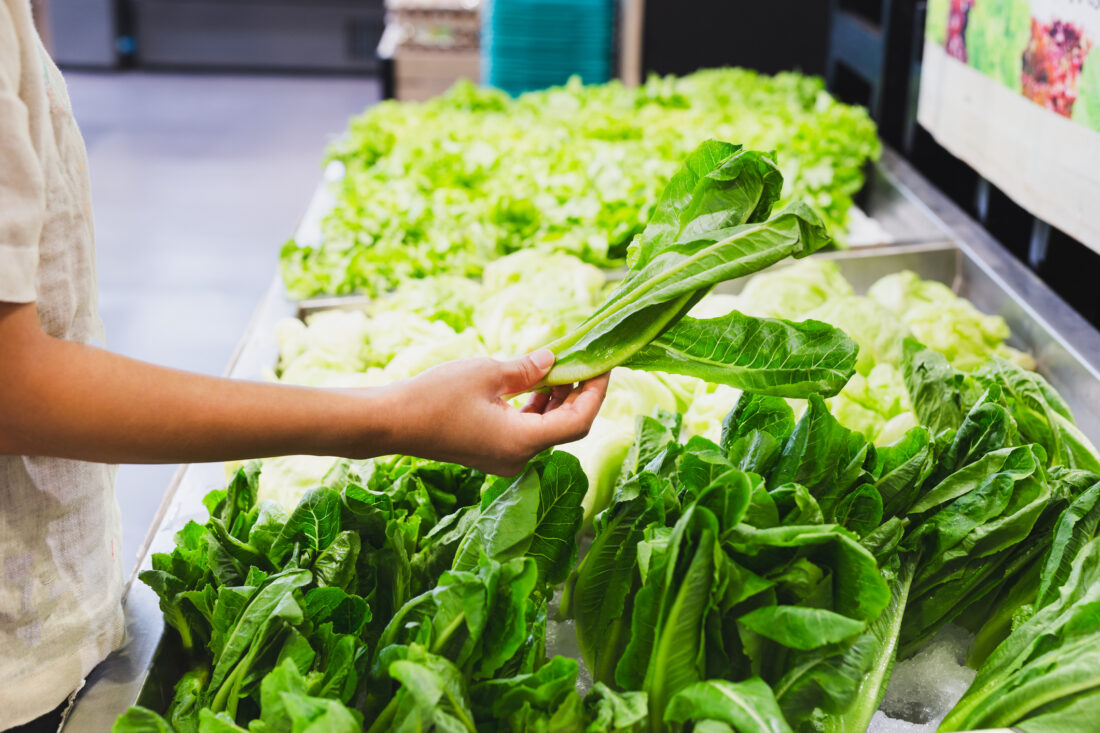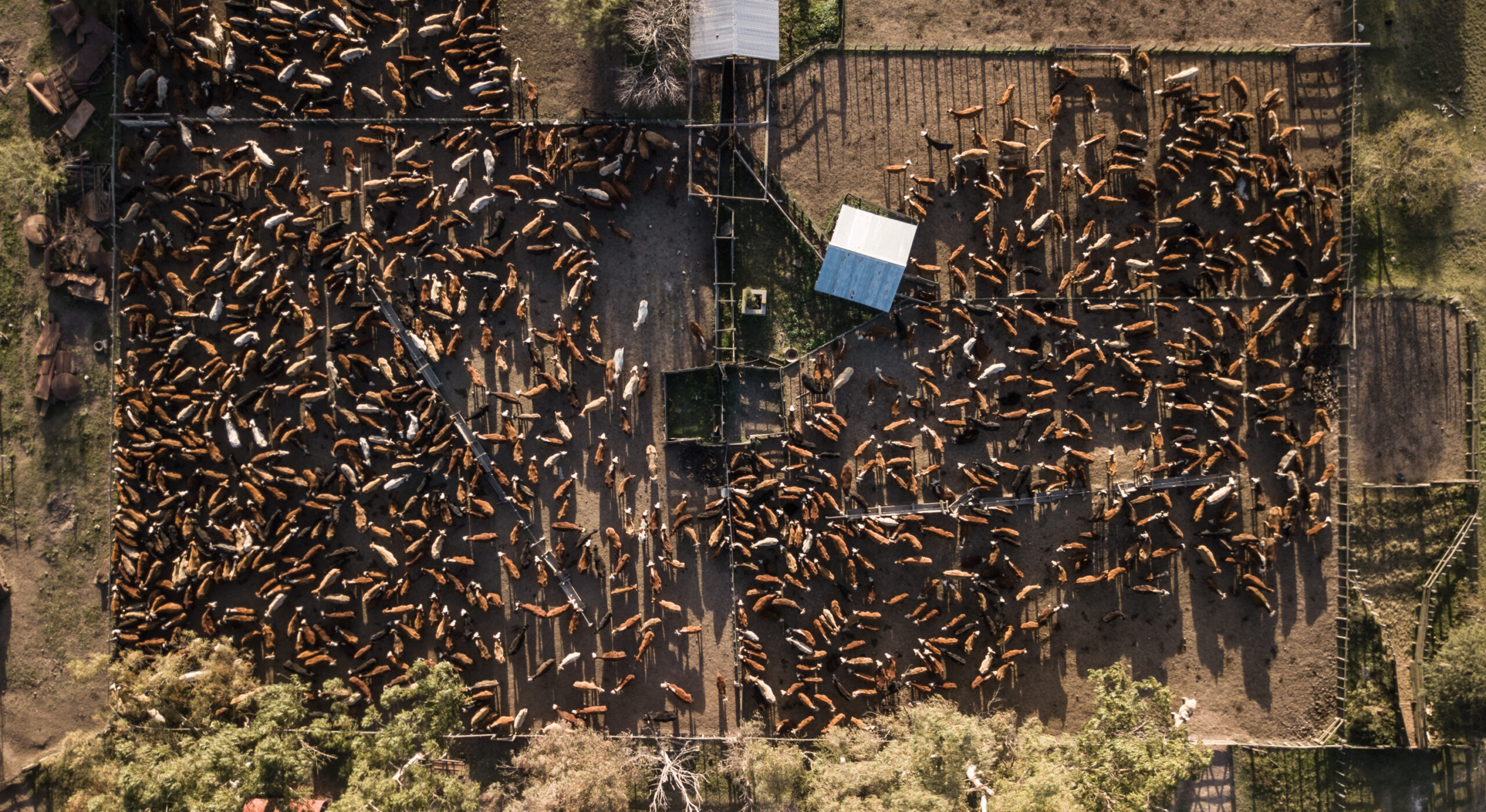
How Industrial Animal Ag is Making Lettuce Dangerous
By Holly Bainbridge
Staff Attorney
It is no secret that industrial animal agriculture has devastating impacts on our air, water, and communities. A recent U.S. Food and Drug Administration (FDA) study confirms that factory farms are contaminating the lettuce at your grocery store, too. By understanding the ways industrial animal ag contaminates produce with dangerous pathogens like E.coli, we can begin to address the root causes of foodborne illness and advocate for a food system that prioritizes safety and sustainability.
Over the course of five years, FDA collected environmental samples of irrigation water, soil, sediments, air, dust, animal fecal material, and other potential pathogen sources across a 54-mile area. The study paid special attention to McElhaney Feedyard, a 115,000-cow feedlot located amongst the produce fields in the Yuma region of Arizona. Thousands of acres of leafy greens are located within a short distance of this farm.
The feedlot is part of Five Rivers Cattle Feeding, the world’s largest cattle-feeding company, which produces more than 1.8 million cows per year. Five Rivers’ parent company is JBS, the largest meat processing enterprise in the world. JBS is the recent subject of the New York Attorney General’s lawsuit alleging that JBS’s claim that it will be net zero on greenhouse gas emissions by 2040 is false because the company plans to increase production.
Here are some key findings from FDA’s analysis revealing that pathogens from factory farms travel through both air and water to infect leafy greens:
- In numerous instances, dust from the feedlot carried viable Shiga toxin-producing E. coli (“STEC”) to leafy green produce fields and surrounding land and water. STEC is a particularly toxic form of E.coli that can cause diarrhea, stomach cramps, vomiting, and even death. This was a key finding because airborne transmission of pathogens is a critical yet often overlooked pathway for factory farm contamination.
- Increased STEC concentrations were observed in irrigation canals adjacent to livestock operations. The high volume of manure collected on factory farms is prone to infecting surrounding waterways, a major vector for the spread of various pollutants. In this case, water from the irrigation canals is then sprayed on leafy green produce fields, infecting them with pathogens.
- Although industrial animal agriculture tries to scapegoat wildlife for E.coli contamination, very few wildlife scat samples tested positive for STEC. Therefore, FDA concluded birds and other wildlife did not appear to be significant sources of pathogens. The study makes clear that intensive confinement of cattle was the cause.
The FDA’s study followed on the heels of the largest E.coli O157:H7 outbreak in recent history, which was caused by romaine lettuce grown in the Yuma, Arizona region. E.coli O157:H7 is a form of STEC. The 2018 outbreak spanned 36 states and resulted in at least 210 illnesses, 96 hospitalizations, and five deaths. FDA’s initial investigation found that 36 fields on 23 different lettuce farms had the same strain of E.coli implicated by the outbreak.
This was not an isolated incident: leafy green vegetables, including lettuce, spinach, and kale, are a major source of foodborne illness, causing up to 2.31 million illnesses annually. Between 2006 and 2019, leafy greens have been involved in at least 46 multistate E.coli outbreaks.
Historically, E.coli and Salmonella were associated with undercooked meat and were not considered “plant-associated” since both pathogens originate from animals. E.coli only gets in food if animal fecal matter gets on food. These pathogens thrive in the intestines of livestock, particularly cows, and are excreted in their feces. The presence of these contaminants is nearly universal among farmed animals: a USDA study showed that 93% of fecal samples from 136 beef operations contained E.coli.
As our food system has increased its reliance on factory farming over the decades, pathogens like E.coli have made the jump to being standard leafy green contaminants. Studies have shown that when cattle are fed large portions of grain, as is the practice on factory farms, the number of E.coli present in a cow and the E.coli’s resistance to the cow’s stomach acid rise significantly, increasing the likelihood that E.coli will survive and spread. Moreover, large-scale feedlots generate and store tremendous amounts of waste, and in doing so collect intense concentrations of dangerous contaminants, like E.coli. These pollutants then make their way into our water, air, and soil, poisoning everything within their reach.
Unless you are fortunate enough to buy all the produce you consume from local growers, chances are that you are eating leafy greens sourced from farms that are near large scale animal feedlots. California and Arizona together account for 90% of all leafy greens produced in the United States. The FDA’s study focused on the Yuma area, which sits at the nexus of Arizona, California, and Mexico. From November to March, when it is too cold to grow produce elsewhere, this area produces 90% of all the leafy green vegetables grown in the United States. The regions of California and Arizona where leafy greens production is prevalent are also home to massive animal agriculture operations where thousands of animals are crammed into close quarters.
The National Cattlemen’s Beef Association—a group that only represents the interests of Big Ag—has attempted to dispute the study by representing that their industry is not the cause of pathogen contamination and that more scientific data is needed. But, as technical experts have recognized, FDA’s data collection was extensive and its findings are well supported by scientific data published over the last two decades.
FDA’s findings also make logical sense: pathogens thrive when high numbers of cows are kept in intensive confinement and their waste accumulates and spreads throughout the surrounding environment, be that neighboring communities or produce fields.
FDA’s study helps define the causal chain of foodborne pathogens from industrial animal agriculture to produce fields to consumers’ plates and bellies. Now is the time to hold industrial animal agriculture responsible for the harm that it causes. These outbreaks are avoidable and lives can be saved if we change our food system in a way that puts health and safety before corporate profits. Industrial practices associated with large scale feedlots are wholly incompatible with a food system that safely nourishes everyone. At FarmSTAND, we’re fighting to protect the environment and consumers and to build power in communities where factory farming externalizes and concentrates its negative impacts.
Across FarmSTAND.org, explore how FarmSTAND works each day to protect human health and the environment, and also to empower consumers to hold corporations accountable for deceiving or harming the public.

